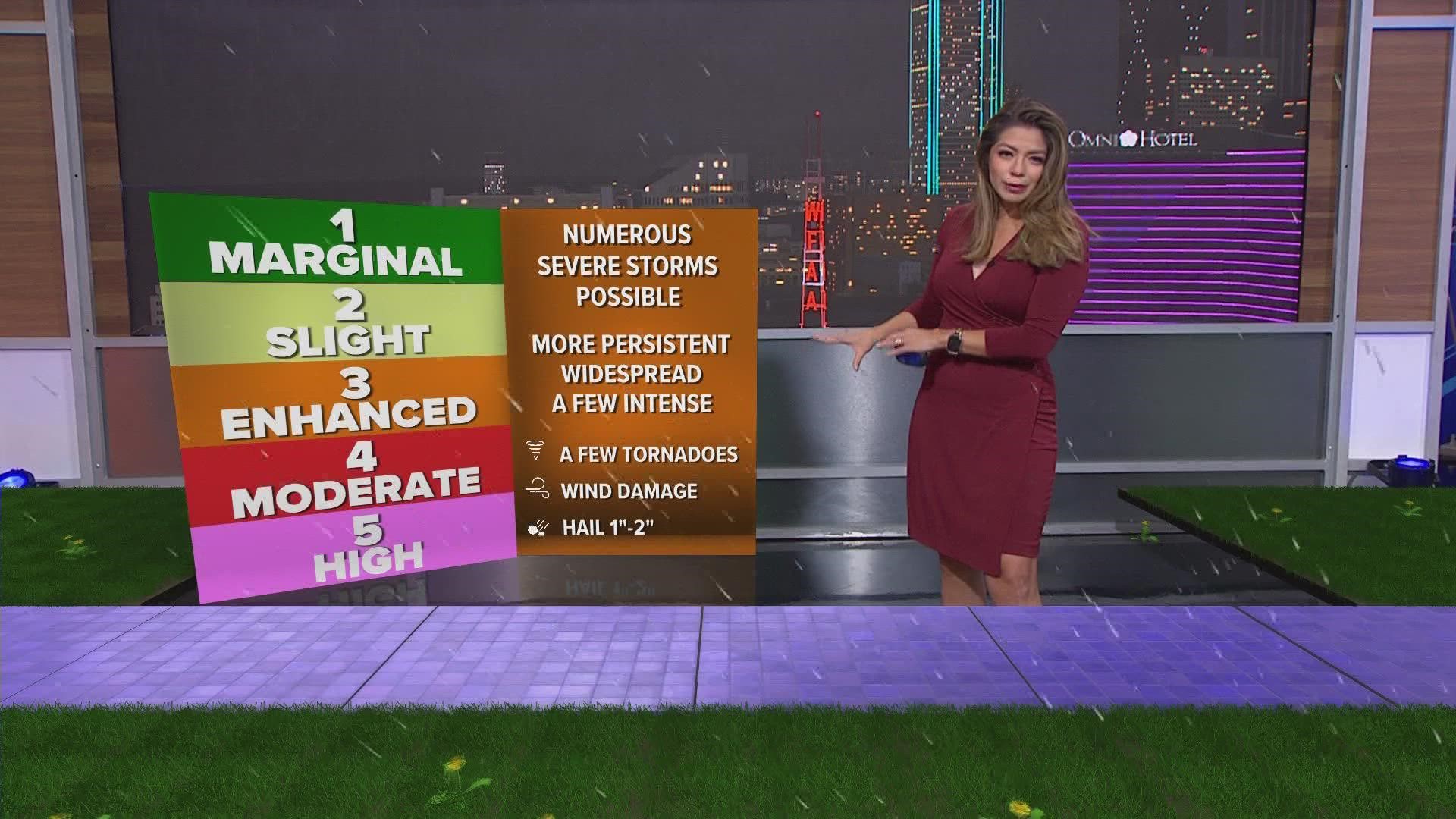DALLAS — When severe weather is in the forecast for North Texas, you'll hear our meteorologists talking about various risk levels brought on by the storms.
These 1 through 5 ratings are a range of risk categories issued by the National Weather Service for North Texas where Category 1 represents "marginal" risk, Category 2 is a "slight" risk, Category 3 stands for "enhanced" risks, Category 4 brings "moderate" risk and Category 5 stands for "high" risk.
But what does each risk category actually mean? And what can you expect for the one you're under?
Here's a rundown from the Storm Prediction Center (SPC):
What are the five risk categories?
In order of risk and severity, here are the five categories and what they mean, according to the SPC:
1. Marginal (Green): This initial level means isolated severe thunderstorms are possible. Storms would likely be limited in how long they last, how much area they cover and how intense they become.
2. Slight (Yellow): A slight risk means scattered severe storms are possible, though they'd likely be short-lived and not have widespread coverage over an area. While they might not be as persistent, these storms could still produce isolated intense conditions.
3. Enhanced (Orange): Under enhanced conditions, numerous severe storms are possible. This level is marked by more persistent and widespread storms, a few of which could be intense.
4. Moderate (Red): Jumping to a moderate risk level means more widespread severe storms are likely, and they could be long-lived and intense.
5. High (Pink): The highest risk category means widespread severe storms are expected to happen and they'll be long-lived, across a wide area and "particularly intense," according to the SPC's guidance.

